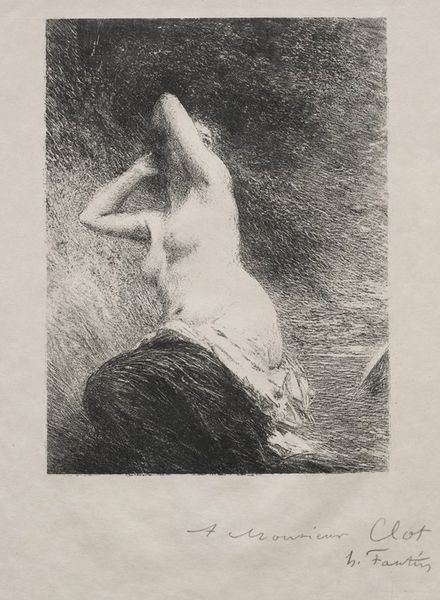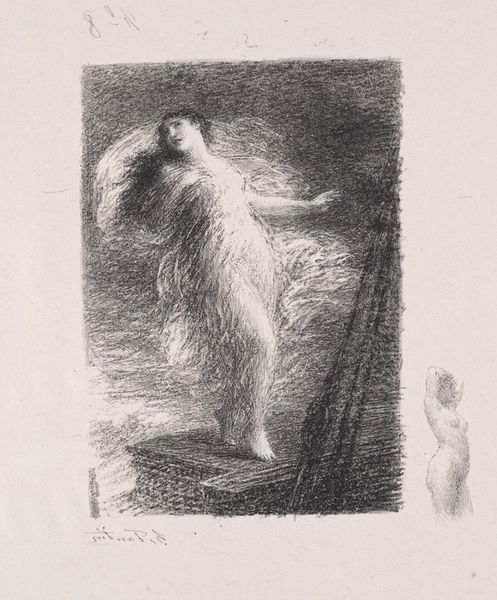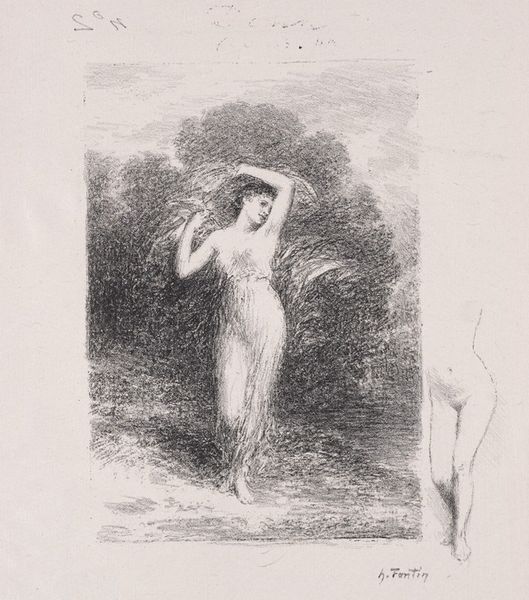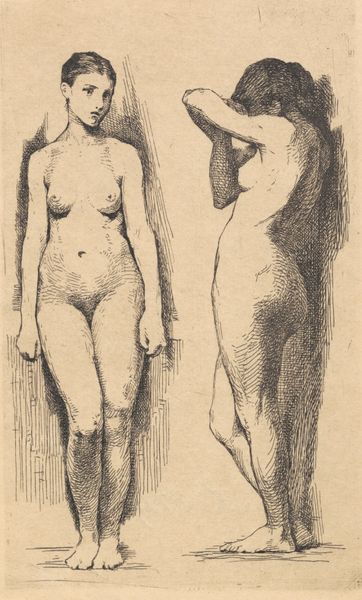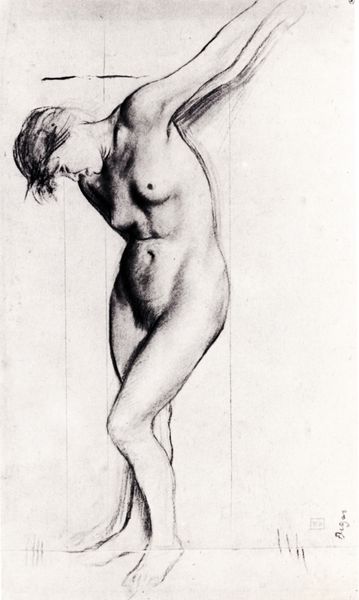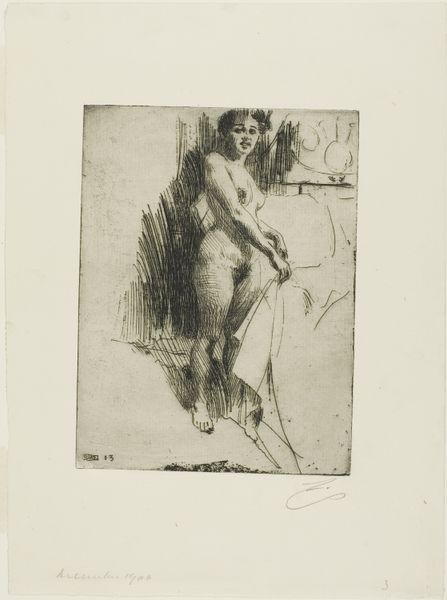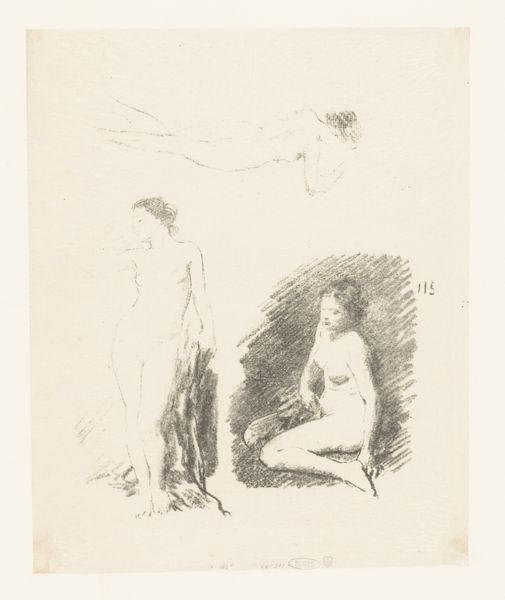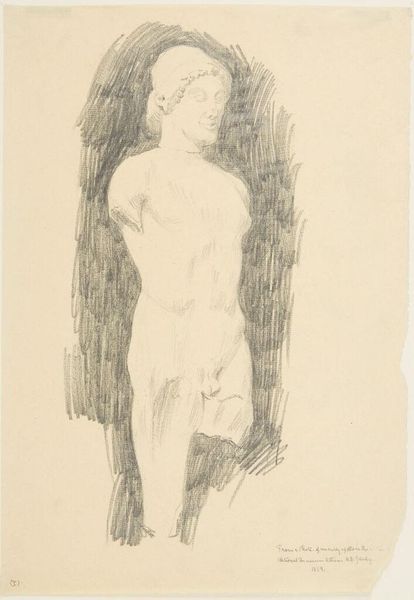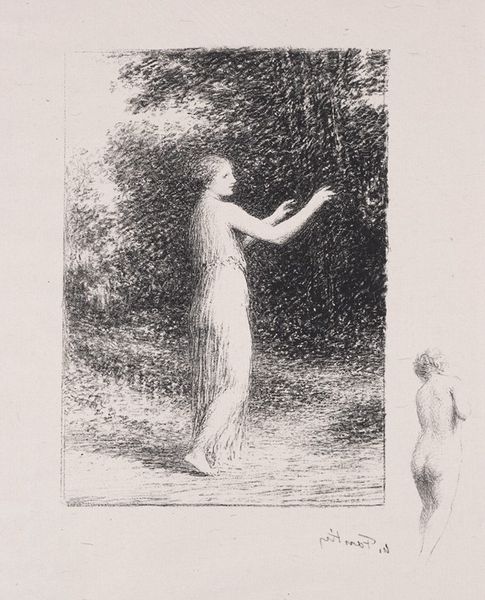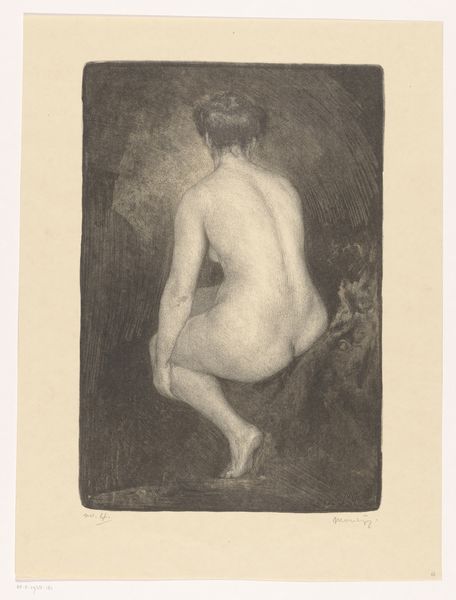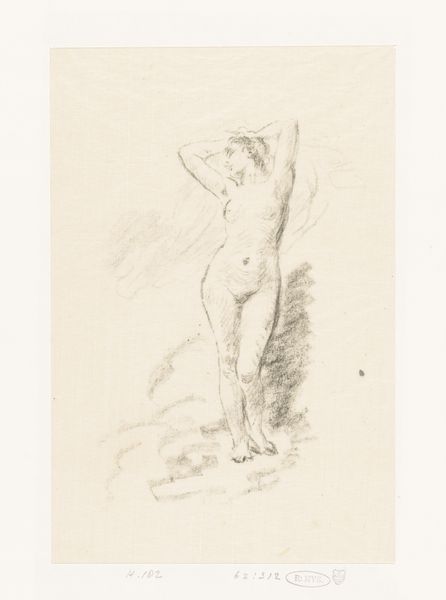
drawing, pen
#
portrait
#
drawing
#
figuration
#
pencil drawing
#
intimism
#
symbolism
#
pen
#
portrait drawing
#
nude
Copyright: Public Domain: Artvee
Curator: Welcome. We're standing before Henri Fantin-Latour's "Diane," created in 1903 using pen and pencil. What strikes you first about this drawing? Editor: It's remarkably somber, almost dreamlike. The dark background presses in on the figure of Diane, yet the light seems to emanate from within her. The sketches on the right side feel ghostly. Curator: Indeed. Latour was fascinated by mythological subjects, particularly figures like Diane, the Roman goddess of the hunt and the moon. We can consider how this portrayal situates women within a history of classical ideals, while also acknowledging the male gaze inherent in such depictions. What social or gendered expectations do you see being referenced or challenged in this image? Editor: The chiaroscuro is used very effectively to accentuate the curve of the body. I see an interesting contrast between the softness of the pencil work defining Diane and the scratchier, almost frenzied use of lines in the background. It creates an unsettling juxtaposition. There is an undercurrent that gives the eye no repose. Curator: Exactly. It may signal the transition between interior and exterior worlds. Think of how late 19th and early 20th-century art critiqued traditional narratives of femininity by using mythological themes to explore notions of power and agency. Do you read anything of agency in this subject, or in how she has been captured on the page? Editor: Possibly a sense of emerging from the darkness into light. While she appears passive at first glance, her physical stance displays power. However, the downward cast of her eyes suggests either internal conflict or deference, which would undermine the reading of this piece as purely her coming into power. Curator: I agree, and by delving deeper into historical interpretations and acknowledging societal constraints placed upon women at the time, we can achieve a more profound awareness of the complicated themes explored here. Editor: A fitting description of Fantin-Latour's drawing! The work encourages us to reconsider and adjust our perceptions as we gaze upon it.
Comments
No comments
Be the first to comment and join the conversation on the ultimate creative platform.
